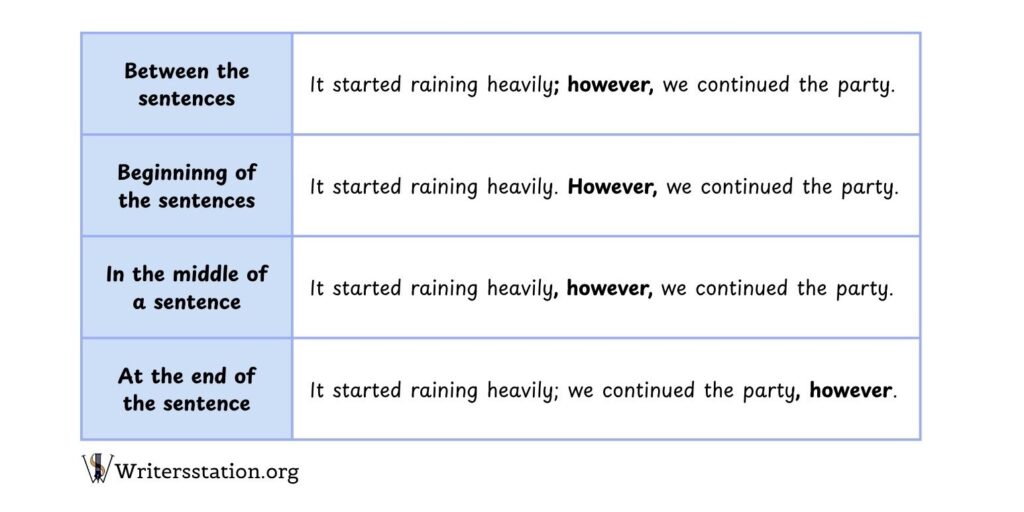Conjunctive
Adverbs
Conjunctive adverbs can be considered as a type of transition.
They connect two clauses or sentences, and show the relationship between the ideas.
For example, some relationships include cause and effect, sequence, contrast, emphasis, and example.

What are some common mistakes with conjunctive adverbs?
1. Using too many conjunctive adverbs can be overkill. Instead of improving the flow of your sentences, overusing conjunctive adverbs can make your writing sound awkward and interruptive.
2. Comma splice can occur if you try using the conjunctive adverbs like coordinating conjunctions. When you are trying to join two independent clauses together, try using coordinating or subordinating conjunctions. For example, “I studied for four hours, however I failed the exam” creates a comma splice. There are multiple ways to fix this error. You can replace the conjunctive adverb “however” with a conjunction like “yet”. Another way to fix this error is to replace the comma with a semicolon.
Conjunctive Adverbs Worksheet #1
[Grades 4-6] Conjunctive Adverbs #1 Worksheet with Answers
[Grades 4-6] Conjunctive Adverbs #1 Worksheet Only
[Grades 4-6] Conjunctive Adverbs #1 Answers Only
Powered By EmbedPress
Powered By EmbedPress
Powered By EmbedPress
Conjunctive Adverbs Worksheet #2
[Grades 4-6] Conjunctive Adverbs #2 Worksheet with Answers
[Grades 4-6] Conjunctive Adverbs #2 Worksheet Only
[Grades 4-6] Conjunctive Adverbs #2 Answers Only
Powered By EmbedPress
Powered By EmbedPress
Powered By EmbedPress
Conjunctive Adverbs Worksheet #3
[Grades 4-6] Conjunctive Adverbs #3 Worksheet with Answers
[Grades 4-6] Conjunctive Adverbs #3 Worksheet Only
[Grades 4-6] Conjunctive Adverbs #3 Answers Only
Powered By EmbedPress
Powered By EmbedPress
Powered By EmbedPress
Powered By EmbedPress
